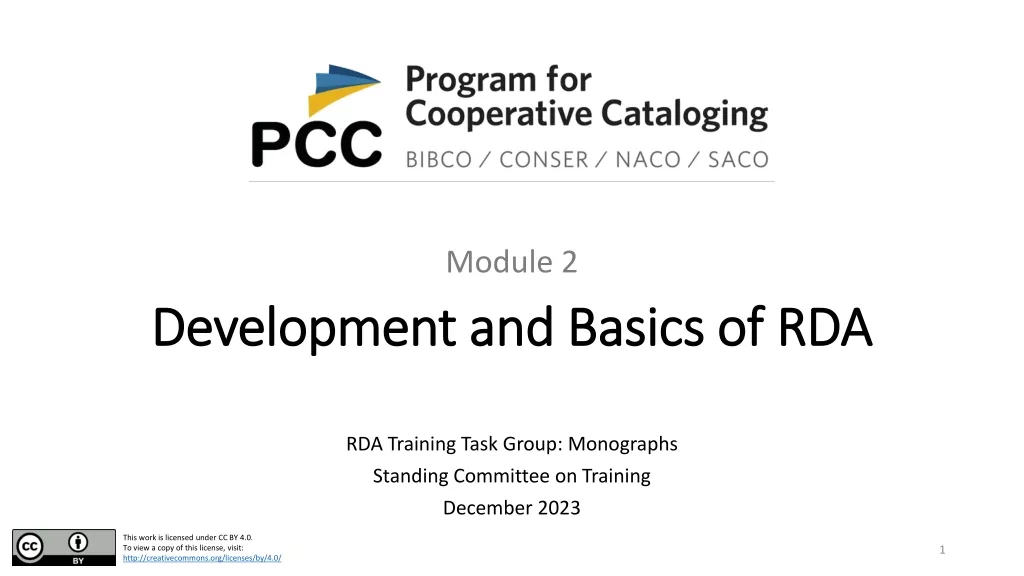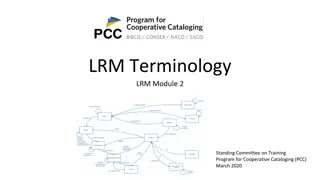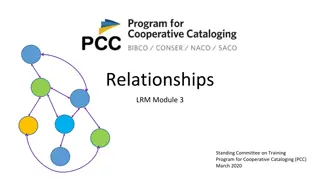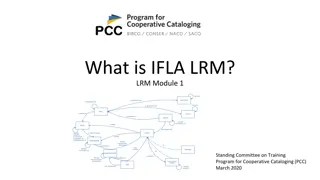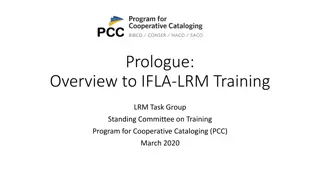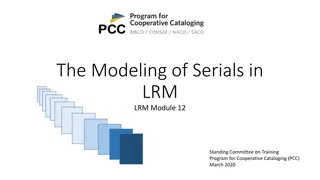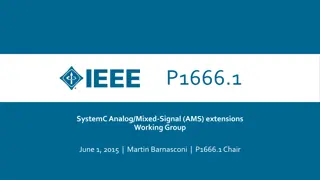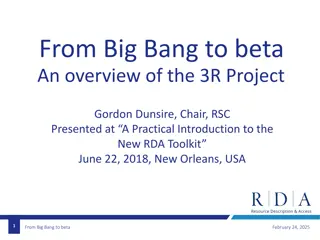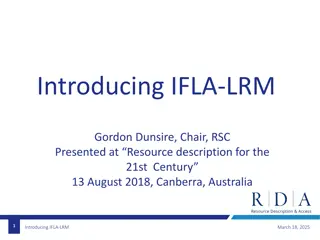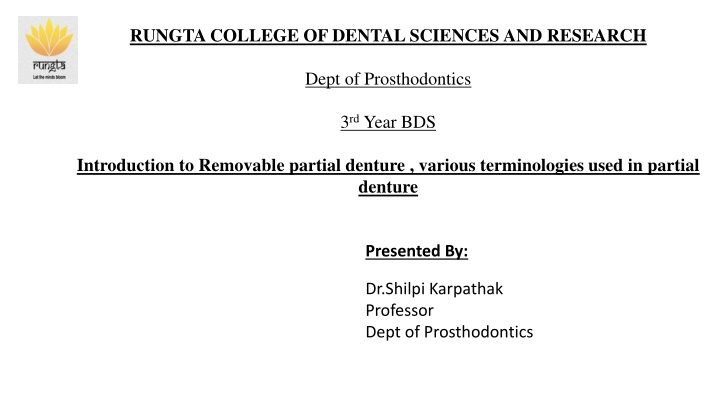
Prosthodontics: Terminologies, Branches, and Advancements
Explore the world of prosthodontics, from the evolution of dental terminology to the three major branches - Fixed, Removable, and Maxillofacial Prosthodontics. Learn about the importance of standardizing dental terms, the role of prosthodontics in restoring oral health, and the advancements that have shaped the field over the years.
Download Presentation

Please find below an Image/Link to download the presentation.
The content on the website is provided AS IS for your information and personal use only. It may not be sold, licensed, or shared on other websites without obtaining consent from the author. If you encounter any issues during the download, it is possible that the publisher has removed the file from their server.
You are allowed to download the files provided on this website for personal or commercial use, subject to the condition that they are used lawfully. All files are the property of their respective owners.
The content on the website is provided AS IS for your information and personal use only. It may not be sold, licensed, or shared on other websites without obtaining consent from the author.
E N D
Presentation Transcript
RUNGTA COLLEGE OF DENTAL SCIENCES AND RESEARCH Dept of Prosthodontics 3rd Year BDS Introduction to Removable partial denture , various terminologies used in partial denture Presented By: Dr.Shilpi Karpathak Professor Dept of Prosthodontics
Specific Learning Objective Core areas Domain Category Introduction Branches of Prosthodontics Cognitive Must Know Terms related to Prosthesis Treatment of Partially edentulous cases Cognitive Must Know Contraindications of FPD Indications of RPD Psychomotor Must Know Summary Affective Must Know
contents Introduction Branches of Prosthodontics Terms related to Prosthodontics Treatment of Partially edentulous cases Contraindications of FPD Indications of RPD Summary Take Home message References
Introduction Several efforts have been made to standardize dental terminology, beginning with Dr Louis Ottofy s compilation of accepted dental terms in 1923. As the dental profession matured, new materials and techniques were introduced. Increasing dental knowledge gave rise to recognized dental specialties, and dental terminology continued to evolved.
The greatest advance in prosthodontic terminology was made in 1956 when the Academy of Denture Prosthetics published the Glossary of Prosthodontic Terms. Currently, the Glossary is published in the Journal of Prosthetic Dentistry every 2 years.
Branches of prosthodontics The art or science of replacing absent body parts is termed prosthetics, and any artificial part is called a prosthesis. Prosthodontics is the branch of dental art and science that deals with the replacement of missing teeth and oral tissues to restore and maintain oral form, function, appearance, and health.
There are three major divisions of prosthodontics Fixed Prosthodontics Removable Prosthodontics Maxillofacial Prosthodontics
Fixed prosthodontics -branch that deals with the replacement and/or restoration of teeth by artificial substitutes that are not readily removed from the mouth. GPT 9 The glossary defines maxillofacial prosthodontics as the branch of prosthodontics concerned with the restoration and/or replacement of stomatognathic and associated facial structures that have been affected by disease, injury, surgery, or congenital defect.
Removable prosthodontics is devoted to replacement of missing teeth and contiguous tissues with prostheses designed to be removed by the wearer. It includes two disciplines: removable complete and removable partial prosthodontics
Terms related to dental prostheses A dental prosthesis is an artificial replacement of one or more teeth and/or associated structures. In clinical applications, dental prostheses may be supported by teeth, residual ridges, dental implants, or a combination thereof. Consequently, practitioners must be familiar with the associated terminology.
The terms abutment and retainer are central to a discussion of dental prostheses. An abutment is any tooth or dental implant that supports a dental prosthesis. In contrast, a retainer is the portion of a fixed or removable partial denture that attaches the prosthesis to an abutment
Fixed partial dentures have been attached to abutments using dental cements, while removable partial dentures have been attached to abutments by other means. In removable partial denture prosthodontics, there are two principle types of retainers. They are termed extracoronal retainers and intracoronal retainers. Extracoronal retainers consist of two fingers of metal (ie, clasps) that lie on the surface of a clinical crown
One finger of metal is termed a retentive clasp, while the other is termed a reciprocal clasp. The retentive clasp is located in an undercut area of the clinical crown and resists displacement of the prosthesis away from the underlying hard and soft tissues. The reciprocal clasp is located in a non-undercut area and serves as a bracing or stabilizing element for the prosthesis. The resultant assembly is termed an extracoronal retainer because the retentive and reciprocal components lie on the external surfaces of an abutment.
Unlike extracoronal retainers, intracoronal retainers are contained entirely within the contours of a clinical crown. Consequently, the use of intracoronal retainers generally requires the fabrication of two or more specially designed, complete-coverage crowns.
Retention of intracoronal removable partial dentures is dependent upon exact parallelism of the retentive assemblies. Each assembly consists of two parts, commonly termed matrix ( female ) and patrix ( male ). When a dislodging force is applied to the removable partial denture, binding occurs between the external walls of the patrix and the internal walls of the matrix. This binding results in retention of the prosthesis.
Another method for categorizing removable partial dentures relates to the manner of their support. A partial denture that receives support from natural teeth at each end of the edentulous space or spaces is a tooth-supported removable partial denture. Although the denture base contacts the adjacent soft tissues, the prosthesis does not receive significant vertical support from the residual ridge
A second category of removable partial dentures includes those that extend anteriorly or posteriorly and are supported by teeth at only one end. These are called extension base removable partial dentures or tooth- tissue supported removable partial dentures. The majority of these are distal extension removable partial dentures. Distal extension removable partial dentures are supported by teeth at the anterior aspect of the edentulous space and by tissues of the edentulous ridge posteriorly
In certain instances, the terms interim, transitional, and treatment are applied to specific types of removable partial dentures. An interim removable partial denture is a provisional prosthesis intended to improve esthetics and function until a more definitive form of treatment can be rendered. A transitional removable partial denture may be used when loss of additional teeth is inevitable, but immediate extraction is not advisable or desirable. Artificial teeth may be added to a transitional removable partial denture as natural teeth are extracted
A transitional removable partial denture may be worn during the healing process and replaced with a definitive prosthesis when extraction sites have stabilized. A treatment denture may be used as a carrier for treatment material, as a protective covering for a surgical site, or as a matrix for soft tissue healing. In most instances, treatment dentures are used in conjunction with resilient tissue conditioners. The resultant prostheses provide cushioning effects for the underlying soft tissues and promote improved tissue health. Interim, transitional, and treatment prostheses are intended for short-term applications and should never be used for prolonged treatment.
The use of such prostheses over extended periods may cause irreparable damage to a patient s remaining teeth, soft tissues, and bone. Other terms of interest include model and cast. While cast may be used as a verb (to cast an inlay) or as an adjective (a cast framework), it is most often used as a noun to describe an accurate, positive reproduction of a maxillary or mandibular dental arch. Certain adjectives are commonly used to provide more specific meanings for the term (eg, diagnostic cast, master cast, refractory cast). The term model is used to describe a reproduction for demonstration or display purposes.
Hence, a model should be a reasonable facsimile of an object, but need not be an accurate reproduction such as that required for construction of a successful prosthesis. Terms related to clinical applications also must be considered. Undoubtedly the most defined term in prosthodontics is centric relation, closely followed by maximal intercuspal position and centric occlusion position. The basic definition of centric relation is the physiologic relationship of the mandible to the maxilla when both condyles are properly related to their articular discs and the condyle-disc assemblies are stabilized against the posterior slopes of the articular eminences.
This relationship may occur at varying degrees of mandibular opening, but must precede the downward and forward movement (ie, translation) of the condyles. This definition may be embellished in many ways, but if the basic premise of a bone-to-bone relationship is maintained, acceptance of this simple concept can eliminate confusion. Maximal intercuspal position may be defined as the most complete interdigitation of the teeth independent of condylar position
Hence, maximum intercuspation is a maxillomandibular relationship determined by tooth-tooth relationships. Centric occlusion position represents the first contact of the teeth that occurs when the mandibular condyles are in centric relation. Therefore, centric occlusion position is a maxillomandibular relationship dictated by bone-to-bone relationships
Other key terms relate to the displacement resistance exhibited by a prosthesis. The most important of these are retention, support, and stability. For purposes of this discussion, retention may be defined as resistance to displacement away from the teeth and soft tissues of the dental arch; support may be defined as resistance to displacement toward the teeth and soft tissues of the dental arch; and stability may be defined as resistance to displacement in a mediolateral or anteroposterior direction
Treatment of Partially Edentulous Patient When all factors are favorable, the treatment of choice for a partially edentulous patient is placement of a fixed partial denture, and the advent of dental implants has provided a number of new options for carrying out this treatment modality. However, not all patients are candidates for dental implant therapy. Contraindications for dental implant therapy include unfavorable regional anatomy, uncontrolled systemic disease, high-dose head and neck radiation, and extreme surgical risk. Moreover, there are contraindications associated with any type of fixed partial denture therapy, as outlined in the following section.
Contraindications for fixed partial denture therapy Age of patient Most patients younger than 18 years are poor candidates for fixed partial dentures because of large dental pulps and lack of clinical crown height. Tooth reduction sufficient to reestablish normal coronal anatomy in the cast restoration often compromises the health of the pulpal tissues. Consequently, an interim partial denture should be considered for patients younger than 18 years. Length of endentulous span One of the rules of dentistry that has most successfully passed the test of time is that of Dr Irvin Ante.
Antes Law states that the periodontal membrane area of the abutment teeth for a fixed partial denture must be equal to or greater than the periodontal membrane area of the teeth being replaced. Although other conditions may modify this rule to some degree, exceeding the rule by a margin of any significance is almost certain to create problems. Loss of supporting tissues When a large amount of the edentulous ridge has been lost, the practitioner must fabricate a prosthesis that restores function and provides support for the lips and cheeks. In addition, the prosthesis must allow access for oral hygiene. Replacement of missing tissues with a fixed partial denture generally makes it difficult for the patient to maintain a healthy oral environment.
In contrast, restoration with a removable partial denture allows the patient to remove the prosthesis from the mouth. This facilitates cleaning of the prosthesis and permits increased access to the remaining teeth and soft tissues. Rationale for removable partial denture therapy As stated by Dr M. M. DeVan, the primary purpose of removable partial denture therapy must always be the preservation of that which remains, and not the meticulous replacement of that which has been lost.
After it has been determined that this purpose can be satisfied, one should consider the additional purposes of removable partial denture therapy: maintaining or improving phonetics, establishing or increasing masticatory efficiency, stabilizing dental relationships, and developing the required esthetics. If, on the other hand, it is determined that the health of all or part of the remaining oral structures will be compromised, alternative forms of treatment must be considered. For too many years, removable partial dentures were considered stepping stones on the road to complete dentures
With the materials, equipment, and techniques currently available, this type of thinking must be relegated to the past. Removable partial denture therapy is an acceptable form of treatment that provides an increased spectrum of restorative options. Indications for removable partial denture therapy Long-span edentulous area The teeth adjacent to a long-span edentulous area support a removable partial denture in much the same manner that they would support a fixed partial denture.
However, a removable denture receives additional support and stabilization from the tissues of the residual ridge and from the abutment teeth on the opposite side of the arch. Without this distribution of forces, the leverage and torque on the abutment teeth would be excessive. No abutment tooth posterior to the edentulous space Where there is no tooth posterior to the edentulous space to act as an abutment, the choice of replacements is limited.
Fixed partial dentures that are supported at only one end (ie, cantilevered fixed partial dentures) produce harmful torquing forces. These forces often produce bone resorption, tooth mobility, and restoration failure. In some instances, one or more dental implants may be placed in the edentulous area, and the arch may be restored with a fixed partial denture. Reduced periodontal support for remaining teeth In mouths where bony support for the remaining teeth has been severely compromised, prospective abutments may be unable to support fixed prostheses. In these situations, removable partial dentures can derive appreciable support from the remaining teeth and residual ridges.
Hence, the total support that must be provided by the abutment teeth is diminished. Need for cross-arch stabilization When stabilization of the remaining teeth is needed to offset mediolateral and anteroposterior forces (eg, after treatment of advanced periodontal disease), cross-arch stabilization frequently is required. A fixed partial denture can provide excellent anteroposterior stabilization, but limited mediolateral stabilization. Because removable partial dentures are bilateral prostheses, cross-arch stabilization is enhanced.
Excessive bone loss within the residual ridge When a missing tooth is replaced by a fixed partial denture, the artificial tooth (pontic) is positioned so its neck lightly contacts the mucosa over the edentulous ridge. When trauma, surgery, or abnormal resorptive patterns have caused excessive bone loss, a clinician also must deal with replacement of ridge contours.
With the advent of successful regenerative therapies (eg, bone grafting, guided tissue regeneration), it may be possible to restore optimum dimensions to severely resorbed residual ridges. But for patients in whom regenerative therapy is not a viable option, denture bases can be used to restore missing portions of the dental arches. Therefore, properly contoured denture bases may be used to support the lips and cheeks, and to reestablish desirable facial contours
Physical or emotional problems exhibited by patients The lengthy preparation and construction procedures for fixed partial dentures can be trying, especially for patients with physical or emotional problems. In many instances, removable partial denture therapy is indicated to minimize patient-dentist contact time. Treatment should be designed to prevent further oral deterioration and continued until the underlying physical or emotional problems are resolved or appropriately managed.
Treatment selection should not compromise the fit and function of the completed reconstruction. Esthetics of primary concern In some instances, a practitioner is faced with the option of fixed versus removable partial denture therapy. It is often possible to attain a more pleasing appearance by using one or more denture teeth on a denture base. This is particularly true when the practitioner must simulate the appearance of diastemata, dental crowding, dental rotation, extreme changes in the soft tissue architecture (eg, recreation of papillae to avoid the appearance of dark interdental spaces). Denture teeth on a denture base also may permit the practitioner to more effectively satisfy a patient s phonetic and functional requirements.
Immediate need to replace extracted teeth The replacement of teeth immediately following extraction is most readily accomplished using a removable prosthesis. Unlike fixed restorations, properly designed removable partial dentures may be altered rather easily. Acrylic resin denture bases may be relined as ridge resorption occurs. When the edentulous area has stabilized, definitive treatment can be undertaken with fixed or removable partial dentures.
Patient desires Patients sometimes insist on removable prostheses in place of fixed prostheses (1) to avoid operative procedures on sound, healthy teeth; (2) to avoid the placement of one or more implants; and (3) for economic reasons. Patients who have had unpleasant experiences with previous dental procedures often object strenuously to the tooth reduction required for fixed prosthesis fabrication.
Other patients are hesitant to undergo surgical procedures associated with implant placement. A third category of patients needs and desires replacement, but cannot afford fixed or implant-borne prostheses. Differences in these forms of treatment should be explained to patients. It should never be implied that patients opting for removable partial denture therapy will receive inadequate treatment. Successful removable partial denture therapy should be expected if fundamental principles are observed.
Unfavorable maxillomandibular relationships Difficulties are often encountered in patients with unfavorable maxillomandibular relationships. These unfavorable relationships include disharmonies in arch size, shape, and position. A common scenario involves a patient with few serviceable teeth and a moderate-to-severe Class 2 skeletal relationship. Because of the difficulties associated with complete denture therapy in such a patient, every attempt should be made to retain the teeth that may support removable partial dentures. Failure to retain such teeth may result in extremely difficult restorative situations.
Summary From the students point of view we all need to have through knowledge of terminologies and associated indications and contraindication.
Take home message From the students point of view we all need to have through knowledge of terminologies and associated indications and contraindication.
References Stewert s Clinical Removable Partial Prosthodontics, 4th Edition Textbook of Prosthodontics, V.Rangarajan 2nd Edition


